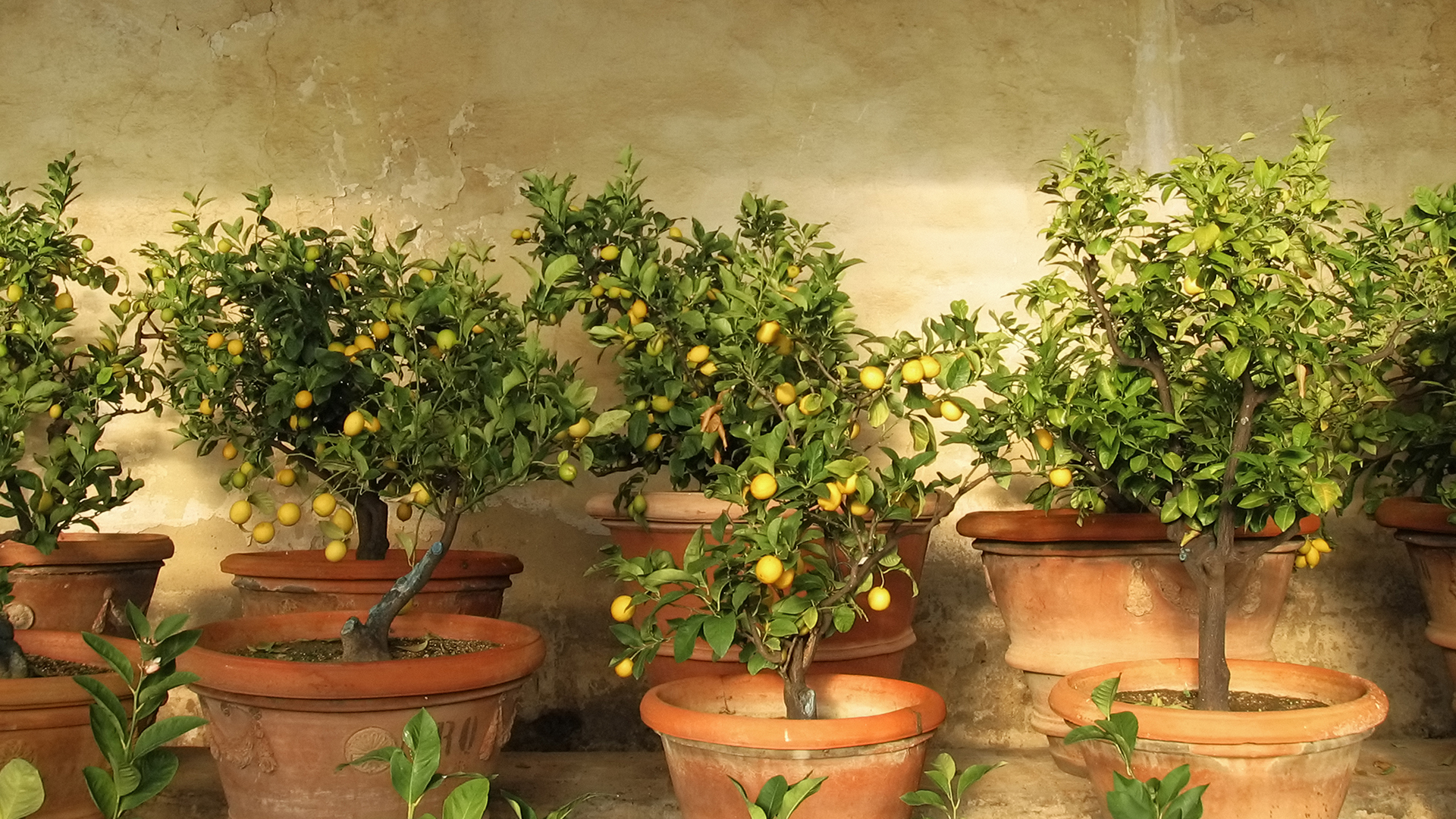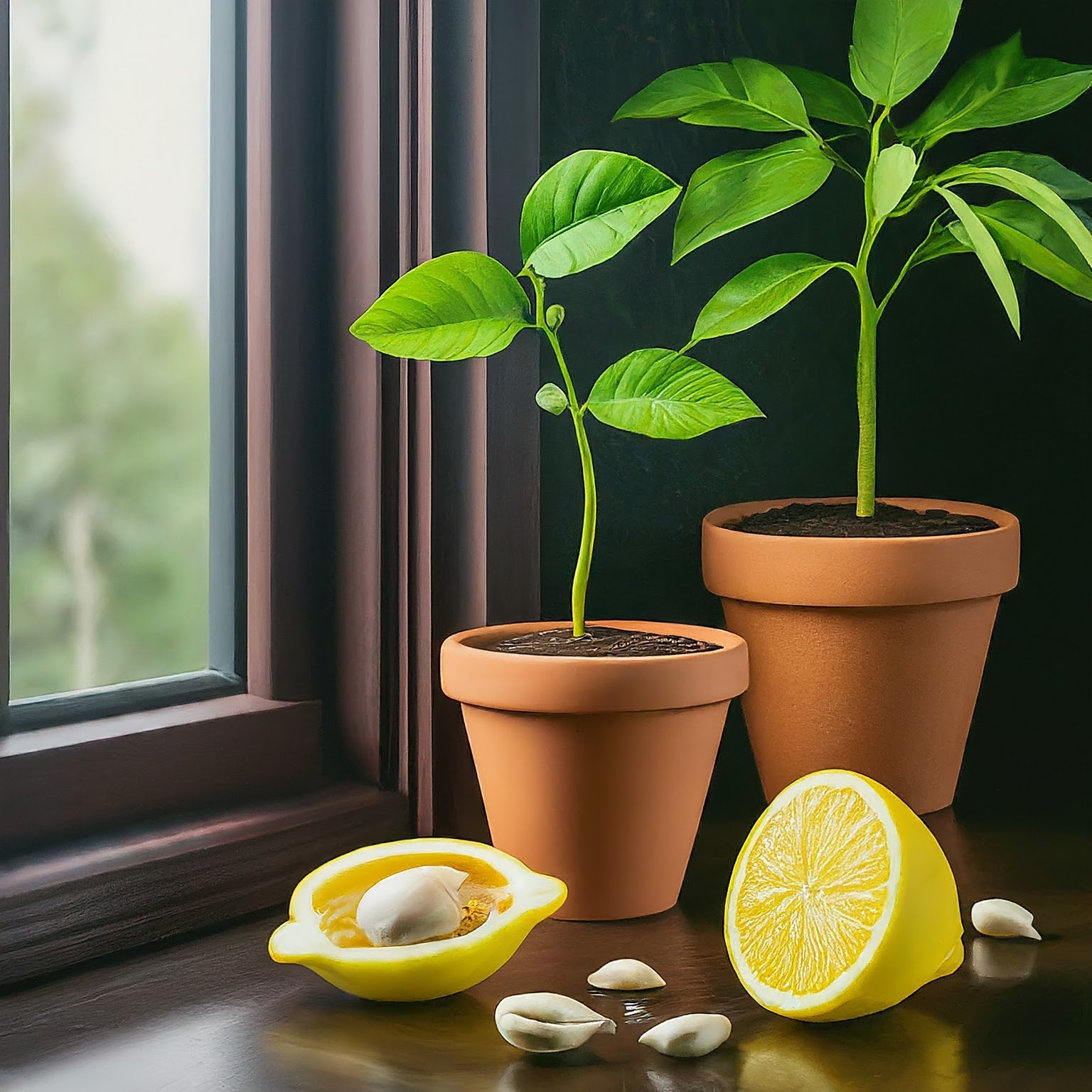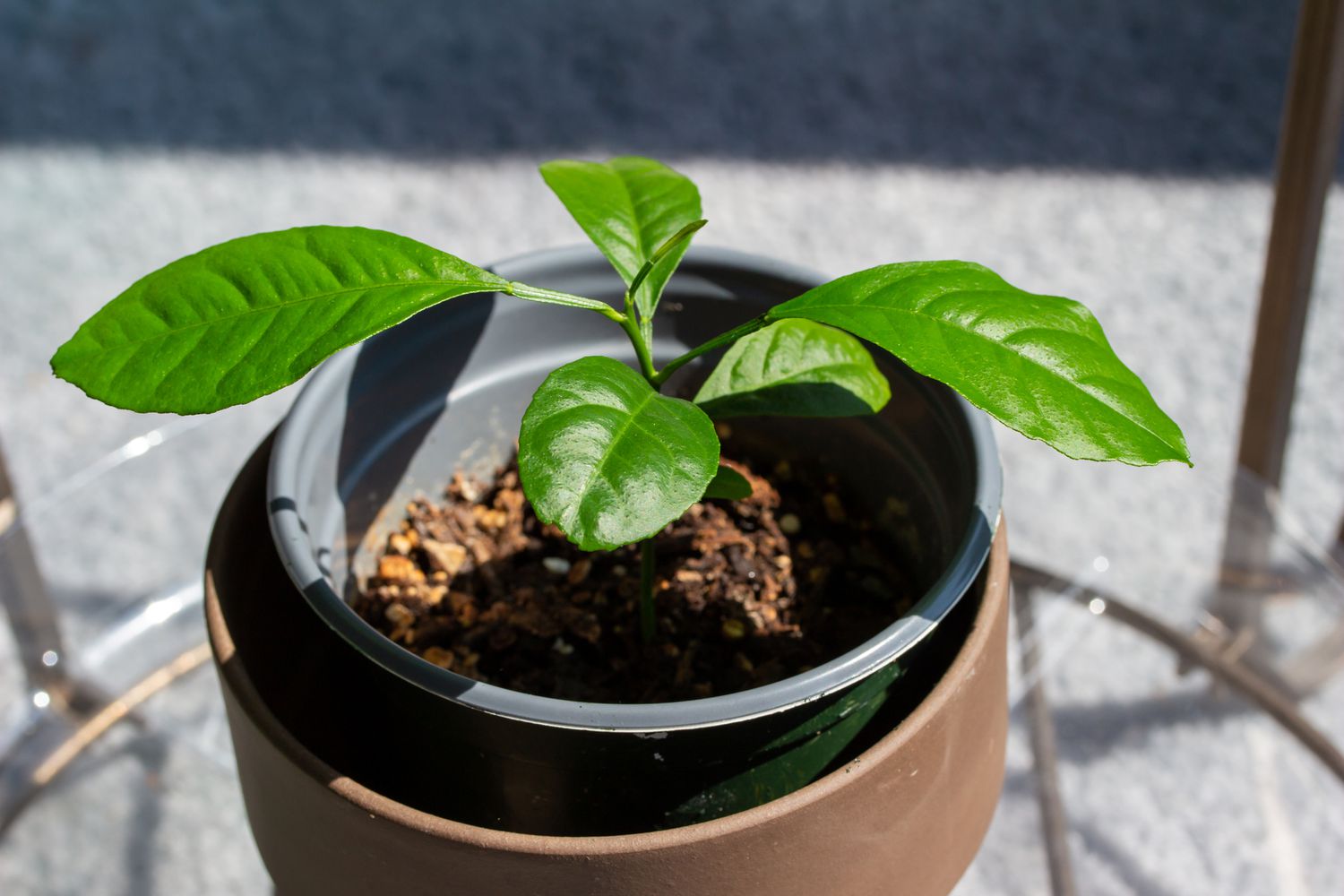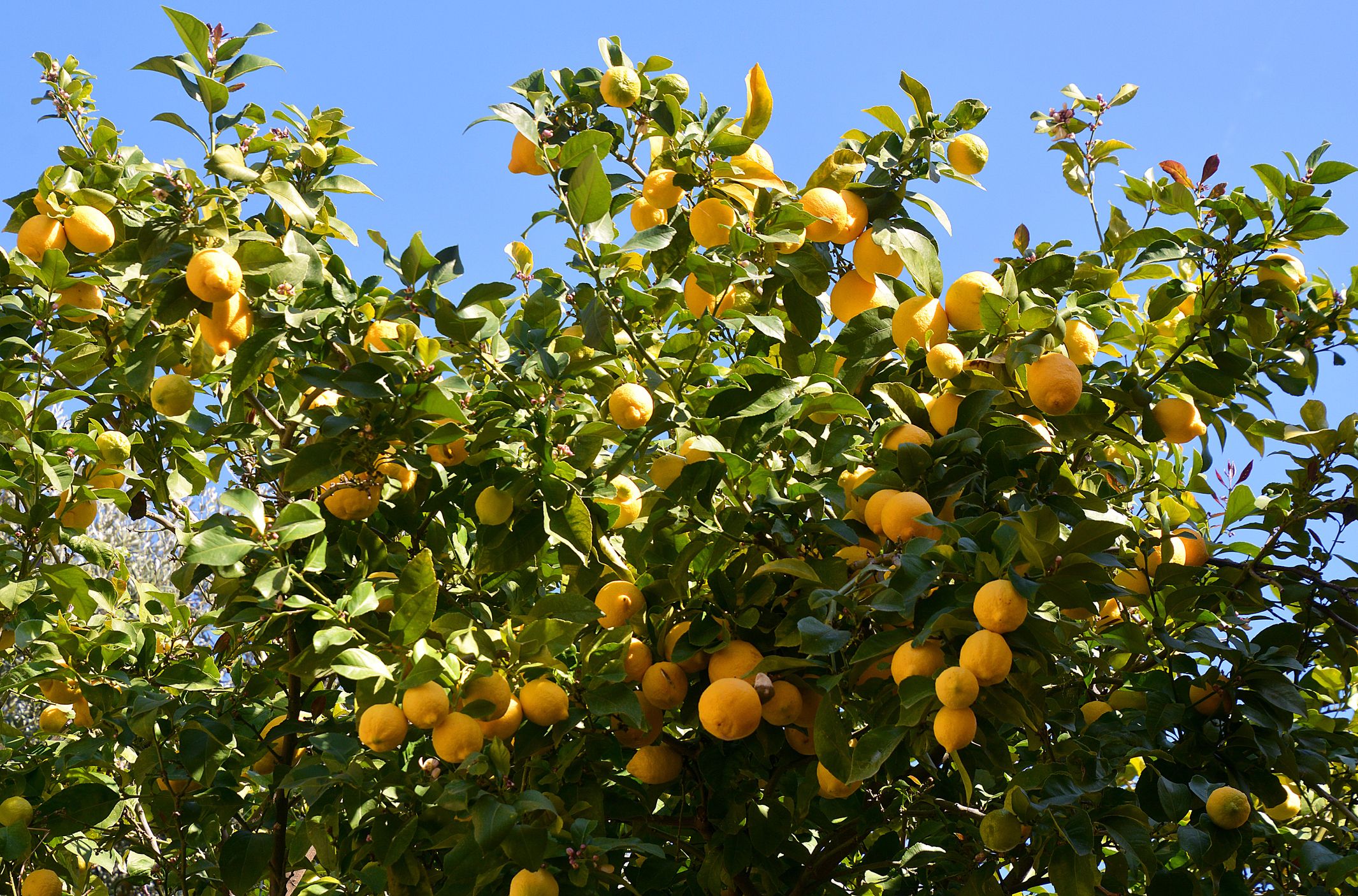Introduction: The Joy of Growing Your Own Lemon Tree
Growing a lemon tree from seed can be a rewarding and fulfilling experience. Not only do lemon trees provide fresh, tangy fruit for culinary purposes, but they also add beauty and fragrance to your home or garden. In this comprehensive guide, we’ll explore the step-by-step process of growing a lemon tree from seed, from selecting the right seeds to caring for your young tree as it matures.

Selecting the Right Seeds: Starting with Quality Seeds
The first step in growing a lemon tree from seed is selecting the right seeds. Ideally, you should use seeds from organic, non-GMO lemons to ensure the health and vitality of your tree. Choose fully ripe lemons with plump, juicy seeds, as these are more likely to germinate successfully. Avoid seeds from hybrid varieties, as they may not produce true-to-type offspring.
Seed Preparation: Preparing Seeds for Planting
Before planting your lemon seeds, it’s essential to prepare them properly to improve germination rates. Start by removing the seeds from the lemon fruit and rinsing them thoroughly to remove any pulp or residue. Some gardeners recommend soaking the seeds in water overnight to soften the outer seed coat and promote germination. Alternatively, you can gently scarify the seed coat with a file or sandpaper to encourage quicker germination.

Planting Seeds: Setting the Stage for Growth
Once your lemon seeds are prepared, it’s time to plant them in a suitable growing medium. Fill small pots or seedling trays with a well-draining potting mix, leaving about an inch of space at the top for watering. Plant the seeds about half an inch deep in the soil, then gently water the soil until it’s evenly moist but not waterlogged. Place the pots in a warm, sunny location, such as a windowsill or greenhouse, to encourage germination.
Germination: Patience is Key
Germinating lemon seeds can take anywhere from two weeks to several months, so patience is key during this stage. Keep the soil consistently moist but not soggy, and provide plenty of warmth and sunlight to encourage seedling growth. You may notice small sprouts emerging from the soil after a few weeks, but it’s essential to continue caring for your seedlings until they establish strong root systems and develop into healthy young trees.
Transplanting Seedlings: Moving to Larger Containers
Once your lemon seedlings have grown to a few inches tall and developed several sets of true leaves, it’s time to transplant them into larger containers. Choose pots or containers with drainage holes to prevent waterlogging, and fill them with a well-draining potting mix. Carefully remove the seedlings from their original pots, taking care not to damage the delicate roots, and transplant them into the larger containers at the same depth as they were growing before.

Caring for Young Trees: Providing the Right Conditions
Young lemon trees require specific care to ensure healthy growth and development. Provide plenty of sunlight, ideally at least six to eight hours of direct sunlight per day, to promote strong, vigorous growth. Keep the soil consistently moist but not waterlogged, watering whenever the top inch of soil feels dry to the touch. Fertilize your young trees regularly with a balanced fertilizer formulated for citrus plants to provide essential nutrients for growth.
Pruning and Training: Shaping Your Lemon Tree
As your lemon tree grows, you may need to prune and train it to encourage a strong, healthy structure. Remove any dead, damaged, or crossing branches to improve air circulation and prevent disease. Encourage a single, central leader by removing competing branches and pruning back any vigorous side shoots. You can also train your lemon tree into a specific shape, such as a standard or espalier, to fit your space and aesthetic preferences.

Pest and Disease Management: Keeping Your Tree Healthy
Like all plants, lemon trees are susceptible to pests and diseases that can hinder growth and reduce fruit production. Keep an eye out for common pests such as aphids, scale insects, and spider mites, and treat infestations promptly with insecticidal soap or neem oil. Monitor your tree regularly for signs of disease, such as leaf spot or root rot, and take appropriate measures to prevent spread and minimize damage.
Harvesting Fruit: Enjoying the Fruits of Your Labor
With proper care and attention, your lemon tree will begin to bear fruit within three to five years of planting. As the fruits ripen, they will gradually change color from green to yellow and develop a fragrant aroma. Harvest your lemons when they are fully ripe, gently twisting them off the tree or cutting them with pruners to avoid damaging the branches. Freshly picked lemons can be used in a variety of culinary applications, from zesty salads to refreshing beverages.
Propagation from Cuttings: an Alternative Method
While growing lemon trees from seed is a popular and rewarding endeavor, it’s worth noting that there’s another method to propagate these citrus beauties: through cuttings. This technique offers a shortcut to maturity, as trees grown from cuttings typically reach fruit-bearing age much sooner than those grown from seeds.

Selecting Healthy Cuttings: Choosing the Right Stems
To start, you’ll need to obtain healthy cuttings from an existing lemon tree. Select stems that are young and vigorous, ideally from the current season’s growth. Look for stems that are about 6 to 8 inches long and free from signs of disease or damage. Using sharp, sterilized pruning shears, make a clean cut just below a node, which is where leaves emerge from the stem.
Preparing Cuttings for Planting: Removing Leaves and Hormone Treatment
Once you’ve gathered your cuttings, it’s time to prepare them for planting. Strip away the leaves from the lower two-thirds of each cutting, as these can rot when in contact with the soil. Dip the cut end of each cutting into rooting hormone powder, which will encourage the development of roots.
Planting Cuttings: Establishing Root Systems
Plant the prepared cuttings in a well-draining potting mix, either in individual pots or in a propagation tray. Make a hole in the soil using a pencil or similar tool, then insert the cut end of the cutting into the hole, making sure at least one node is buried beneath the soil. Gently firm the soil around the cutting to provide stability.
Conclusion: Cultivating Citrus Bliss
Growing a lemon tree from seed is a gratifying experience that allows you to enjoy the beauty and bounty of citrus right in your own home or garden. By following these tips for selecting, planting, and caring for your lemon tree, you can cultivate a thriving citrus tree that provides fresh, flavorful fruit for years to come. Embrace the joy of growing your own citrus bliss and savor the fruits of your labor with every harvest.
